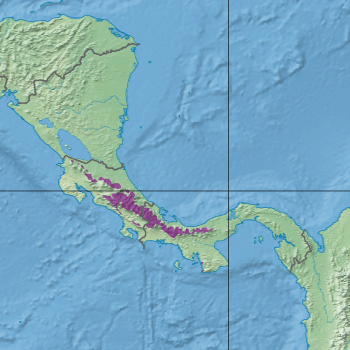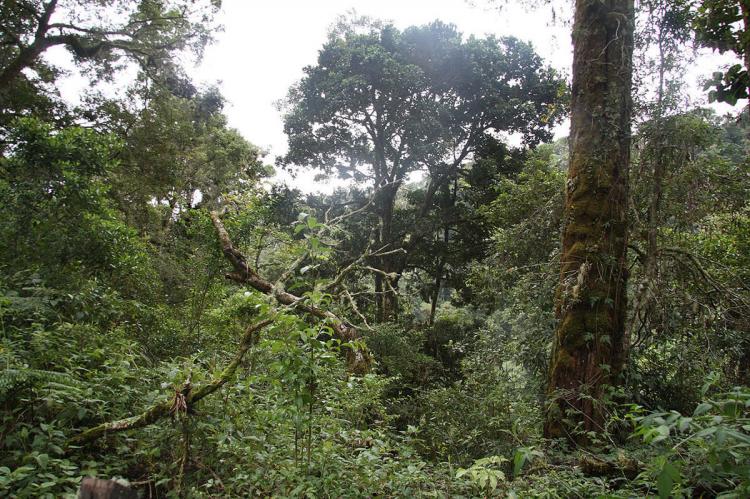The Talamancan Montane Forests: A High-Altitude Haven
The Talamancan Montane Forests ecoregion is a diverse and intact ecosystem in the highlands of Costa Rica and Panama. The montane forests cover the area's towering mountain ranges, housing many endemic species and serving as a sanctuary for various flora and fauna.
The Talamancan Montane Forests: A High-Altitude Haven
Nestled within the rugged highlands of northwestern Costa Rica and western Panama, the Talamancan Montane Forests ecoregion is one of Central America's most intact and biologically diverse ecosystems. This discontinuous expanse of montane forests, cloaked in mist and draped across the region's towering mountain ranges, harbors a wealth of endemic species and serves as a vital sanctuary for a multitude of flora and fauna.
Geographic Extent
A Patchwork of Mountain Ranges
The Talamancan Montane Forests ecoregion encompasses a discontinuous area spanning several mountain ranges, including the Cordillera de Guanacaste, Cordillera de Tilarán, Cordillera Central, and the majestic Cordillera de Talamanca. Additionally, outliers of this ecoregion can be found on the Azuero Peninsula.
Altitudinal Distribution
These montane forests typically occur above an elevation of approximately 750 meters (2,500 feet) on the Pacific slope, and in some areas, they extend to elevations as high as 1,500 meters (5,000 feet). At around 3,000 meters (9,800 feet), the Talamancan Montane Forests transition into the Costa Rican páramo ecoregion, characterized by high-altitude grasslands.
Climate and Topography
A Cool, Humid Environment
Cool temperatures and high humidity characterize the Talamancan Montane Forests ecoregion climate. Average temperatures range from a comfortable 25°C (77°F) to a chilly -8°C (17°F) at the highest peaks, while annual precipitation levels can vary from 2,000 mm (79 inches) to over 6,000 mm (236 inches).
Rugged Terrain and Limited Development
The steep slopes, cool temperatures, and high precipitation levels have historically limited agricultural and urban development within this ecoregion, allowing these moist forests to remain largely intact – one of Central America's most well-preserved ecosystems.
Biodiversity: A Treasure Trove of Life
Flora
The Talamancan Montane Forests ecoregion boasts an exceptional level of plant diversity. Over 30% of its flora, including over 10,000 vascular and 4,000 non-vascular plant species, is endemic to the region. Tree branches are adorned with abundant epiphytes, while tree ferns are a common sight throughout the forests.
Endemic Oak Forests
Among the ecoregion's most striking features are the unique oak forest stands, characterized by majestic trees reaching heights of up to 50 meters (164 feet). These forests are heavily dominated by two endemic oak species, Quercus costaricensis and Q. copeyensis, with an understory characterized by several species of dwarf bamboo (Chusquea).
Elfin Forests
At higher peaks and ridges, where moisture-laden trade winds prevail, an otherworldly elfin or dwarf forest takes hold. These stunted, gnarled trees are densely covered in thick mats of bryophytes, creating a surreal and mystical landscape.
Fauna
While data on the ecoregion's fauna is limited, it is known to harbor several endemic animal species, further contributing to its rich biodiversity.
Conservation Efforts
Protected Areas
Recognizing the ecological importance of the Talamancan Montane Forests ecoregion, nearly 75% of its original forest cover remains intact, with a significant portion being protected within national and international parks and reserves.
Some of the notable protected areas within this ecoregion include La Amistad Biosphere Reserve, Chirripó National Park, Braulio Carrillo National Park, Volcán Poás National Park, Rincón de la Vieja National Park, and the Monteverde Cloud Forest Reserve.
Threats and Challenges
Despite these conservation efforts, the unprotected habitats within the ecoregion face threats from deforestation for agriculture development, cattle pastures, and timber harvesting. Ongoing efforts are needed to preserve the integrity of these unique montane forests and safeguard their rich biodiversity for future generations.
Conclusion
The Talamancan Montane Forests ecoregion stands as a testament to the incredible diversity and resilience of Central America's natural landscapes. From the towering oak forests and mystical elfin woodlands to the multitude of endemic species that call these high-altitude havens home, this ecoregion is a true ecological treasure deserving continued conservation and protection.

Map depicting the location of the Talamancan montane forests (in purple).
